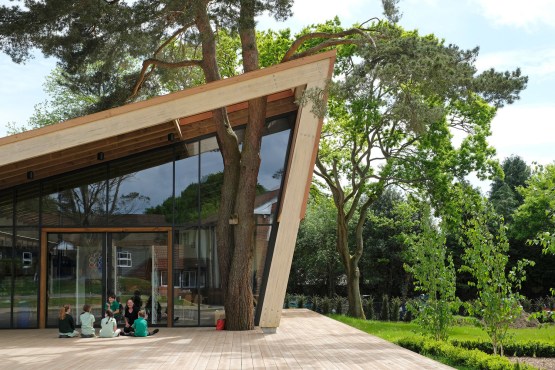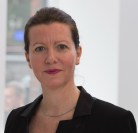The importance of symbolism in school architecture
Jane Crowhurst asks us to think about what physical spaces say about a school’s learning culture and values. What stories do they tell?
Every school space tells a story
The placement of objects in space is not arbitrary, and rooms represent in physical form the spirits and souls of places and institutions.
Herbert Kohl
For Herbert Kohl, architecture is powerfully symbolic and every decision about a school’s spatial design or the objects placed within those spaces tells us something about the school itself. This narrative is continually absorbed at both a conscious and sub-conscious level by all users and this has a profound impact on both their relationship with the school and their ability to function effectively within it.
How often have you entered a school, or a space within a school, and felt instinctively that the school community was valued, that wellbeing was paramount and that profound learning was occurring? Conversely, have you entered and felt disheartened or ill-at-ease? Have you ever considered to what degree the physical environment and how users were interacting with it contributed to these feelings?
It is important to take control of the inbuilt narrative. Three schools with whom we have worked, the International School of Brussels, Amesbury School and Antwerp International School have consciously chosen to communicate powerful stories through their built environments.
Story 1: ‘Innovative and egalitarian’
Retrofit to revolutionse Admissions at International School of Brussels (ISB), Belgium
From our first meeting with David Willows (former Head of Advancement at ISB current Founder) we knew that we were embarking on an exciting journey to completely re-imagine ISB’s reception and admissions spaces. The idea of experience became paramount as we developed a design to tell ISB’s story and provide evidence of the innovative learning happening at the School, connect psychologically and educationally with prospective families, promote their wellbeing during a visit and support an innovative admissions experience.
Located in the ISB’s heritage-protected chateau building, the new spaces showcase ISB as a school of the future, forward thinking yet rooted in tradition, stability and good governance. Through considered design, the experience for visitors extends far beyond the traditional base offering. Visitors are placed at the centre of the experience and every aspect of their interaction with the spaces was considered in fine detail. The spaces welcome them and, together with the admissions professionals, put them at ease during a time which can sometimes be an emotional encounter. Visitors are able to choose, connect and collaborate and the spaces are designed to reflect ISB’s egalitarian ethos – `everyone included´.

This is particularly evident in the ‘Experience Room’ which replaces the traditional admissions office. Here a contemporary room within a room is created in the form of a glass and stainless-steel arch which incorporates an interactive screen and writable glass. All participants have an equal place on the swivelling Egg chairs, whose organic form cocoon and protect. The Admissions Professional is able to access tailored digital information in response to families’ questions and the writable glass is used for questions or displaying other information about the school. In essence, the learning which takes place in this room, the family learning about ISB and ISB learning about the family, mirrors the learning experience within the school as a whole.
Story 2: ‘Sustainable and creative’
New build to drive the Creative Arts at Amesbury School, UK
This award-winning building speaks volumes about Amesbury’s commitment to sustainability and the Creative Arts. As a pavilion building sensitively positioned within the landscape and built with timber sourced from a local forest, it is a building in harmony with nature. Its most striking feature is the preservation and envelopment of an existing mature Scots pine tree within the projecting eaves of the building – this expresses a sentiment even more powerful than harmony and one which says ‘we love the natural world, we will adapt, we will not destroy’. Treading lightly over and between the root network below, the generous external decking flows seamlessly from the interior of the building and encourages and celebrates outdoor learning and exhibition.

This building also signifies ‘creativity is at the heart of what we do, we value and celebrate it’. Since its completion, the number of students choosing creative subjects has increased dramatically. The interior volumes are alive with possibility and inspiration and the observer’s eye is drawn to the timber stair dramatically cantilevered around the splayed walls of the kiln room. This visually stimulating environment embodies and catalyses creativity on the part of the students and educators.
Story 3: ‘Agency and wellbeing’
Retrofit to transform learning potential at Antwerp International School (AIS), Belgium
Andreas Koini (Head of School at AIS) is determined that AIS students have agency over their learning within an environment which promotes wellbeing. It was essential that AIS’s new STEMzone, created within and surrounding an underutilised, old gym, supported and enabled these twin ambitions.
The STEMzone signifies the philosophy that firstly learning can occur anywhere at any time and secondly that different types of learning and different demographic, cognitive and neurological needs must be supported by different physical spaces located within an accessible and ‘open’ environment. The design expresses and strengthens agency by providing a wide variety of tailored spaces. Furniture has been designed to be flexible and moveable and all users are able to re-rearrange furniture to suit their requirements. Easy reconfiguration allows for a smooth transition between different types of teaching and learning. All of this encourages self-determination and autonomy. Overall, the design promotes visibility of learning, collaboration and student engagement.

As a whole, the STEMzone represents the value AIS places on students and educators. Physical wellbeing is supported through new skylights which bathe users in natural light and new windows which engender a connection to the beautiful tree-filled environment and changing weather conditions. Seeing the natural environment from within the STEMzone is both uplifting and serves to reduce stress. Sophisticated acoustic treatments ensure that several activities can take place simultaneously in this open environment.
Prior to the creation of the STEMzone, students lacked space for socializing or just ‘being’, before and after school and between classes. The new STEMzone offers a variety of spaces, each with a specific look and feel, from the generous communication stair, to comfortable sofas and high tables. It is fascinating to watch the ebb and flow of social groups throughout the spaces and how each group or individual finds spaces just right for themselves.
Planning the message of the built environment
Considering what your school’s built environment says about the teaching and learning that occurs within its walls and spaces should not be left to chance or subsumed by a purely institutional approach to school architecture. It is essential for the current or desired learning culture to be the driver of intentional architectural change, and this should influence both the functioning of and the symbolism inherent in the design.When these two elements work in tandem, architecture can advance profound student-centred learning.
 Jane is a Director at tp bennett architects. She works globally on educational projects and believes passionately that both education and architecture are powerful instruments for positive, enduring change within society.
Jane is a Director at tp bennett architects. She works globally on educational projects and believes passionately that both education and architecture are powerful instruments for positive, enduring change within society.
She can be contacted at jane.crowhurst@tpbennett.com
All images kindly provided by tp bennett.
ISB Pictures_Georges de Kinder
Amesbury Picture & AIS Picture_Hufton+Crow

